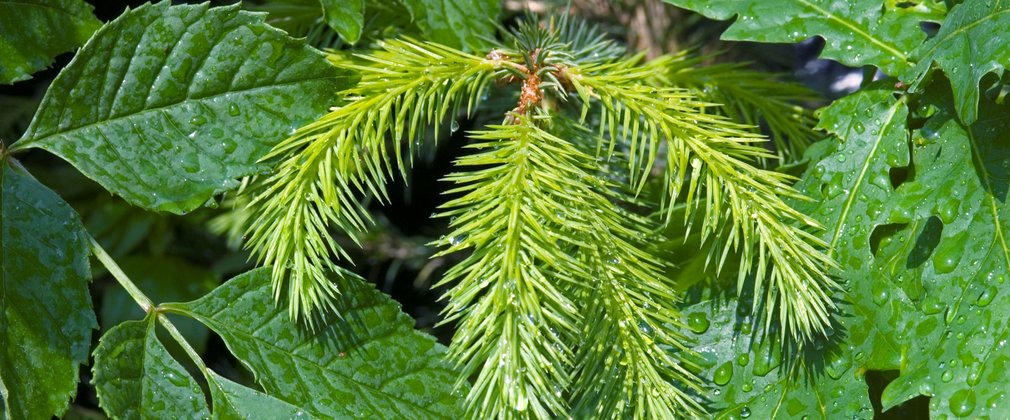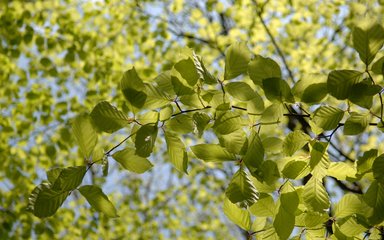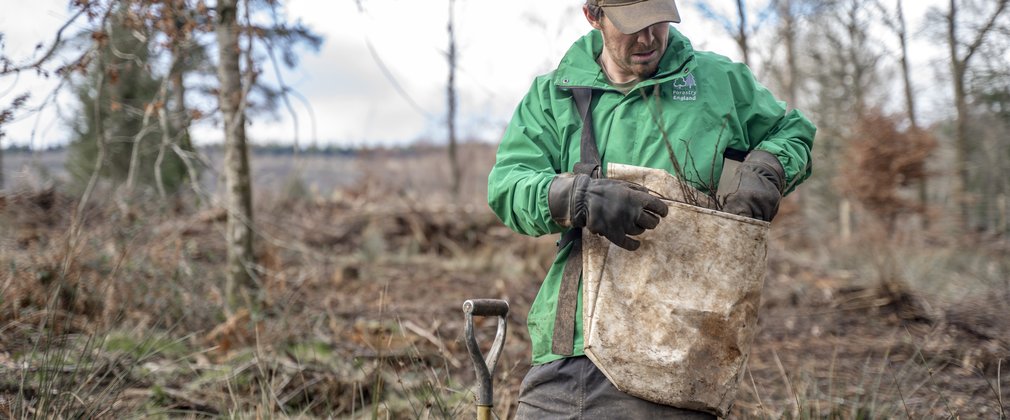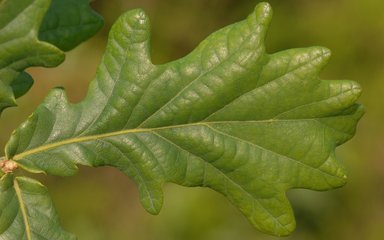
Greater diversity in the nation’s forests
Trees take decades to grow, so we need to plan and plant forests with the future climate in mind. After we plant them, we care for trees for decades and some will live for hundreds of years.
We're putting greater diversity in the nation’s forests to help them adapt to climate change and mitigate the risks to secure important wildlife habitats and a vital supply of sustainable timber.
How do we know which trees will survive?
We know our climate will be different in the future. Summer temperatures could rise by up to 10°C in parts of England by the end of the century. We’re already seeing the impacts of more frequent extreme weather events, such as wildfires and flooding. Without action, it's likely the rate of change is faster than our woodlands can adapt to naturally.
Diverse forests are more resilient to climate change. One way of increasing diversity is to encourage a range of different trees to grow, another is to choose where the seeds we use come from. We're designing forests for the future and diversifying the trees we plant. We don’t know exactly what the future holds and which tree species may suffer more from threats, like climate change and new pests or diseases, so growing different types of tree mitigates the risks.
Tools to help
We use a combination of tools and assessments to help plan our forests. Each site is carefully assessed for its characteristics, such as its soil type, aspect and microclimate, which can all have big impacts on whether different trees will thrive. Together with our decades of experience and expertise, Forest Research's Ecological Site Classification tool helps us choose the right species.
We also use a climate matching tool that matches geographic locations so that we can see which places in the world currently experience the climate we are projected to have in future. We can compare these different places to help us plan which tree species will be suited to a site, now and in future.

Did you know we planted 98 different species of tree last year?
39 types of conifer and 59 different broadleaf species!
Which types of trees do we grow?
A fifth of the trees we plant are alternative species predicted to cope better with climate conditions, including types of redwood, cedar and maple. We’re also breeding native trees more tolerant to pests or disease. Where we can’t supply trees from our own nurseries, we buy UK grown. While we do still grow the most common species for quality timber, such as Sitka spruce and Douglas fir, modern forestry no longer relies on a handful of species.
Working with partners such as Forest Research, we carry out trials and take part in scientific studies to understand if different types of trees may do better in the conditions we expect in 2050 and beyond. Research also helps to make sure new, alterative species being trialled will not harm existing forest ecology.

Where will these trees come from?
Trees, just like us, show variability within and between populations. These varying characteristics within a species may help some individuals to survive changes to their environment better than others. A range of different methods can help keep these beneficial characteristics within a species. So it’s not only different species that makes a forest more diverse, but what's in their genes!
Where there is enough seed in the ground from surrounding trees to develop the required woodland, natural regeneration can help to ensure trees are well adapted to their current local environment. However, this can take time and leaves young trees vulnerable to deer and squirrel damage, so planting saplings can help a new forest to grow more quickly. Planting saplings grown from local seed in our nurseries increases their rate of survival, and so more will become trees.
Sourcing south
We’re also sourcing trees from places where the climate is similar to how our climate could look up to 100 years from now, typically from 2 to 5 degrees south of the planting site. Despite being the same species of tree, genetic differences mean they’re better adapted to certain conditions than local trees. This is called assisted migration.
Different strategies are suitable in different situations and we tailor our approach accordingly. Overall, using a range of approaches (including natural regeneration, local seed and assisted migration) helps to increase genetic diversity and the adaptive capacity of our trees to future conditions.
Alice Holt Forest has oak trees grown from seeds sourced from the Loire Valley in France.
The region is 4 degrees south of the forest and was chosen to match to current climate projections for 2050.

A forest for all ages
It’s not only the type of tree that make a forest diverse. It’s also their height and age. A mix of tree ages creates a more stable forest ecosystem. As some trees are harvested, or older trees die, there are already younger trees growing to take their place. We look after our oldest trees and keep deadwood in the forest to support wildlife.
The structure of a stand of trees is dependent on the type of woodland, its location and previous management. Diversifying the structure can increase resistance to the impact of storms and reduce vulnerability to pests and diseases. Although areas of single age plantations still exist in the landscape, we’re working closer to natural cycles by ensuring a mix of ages where possible. By carefully planning the design of forests we can diversify their age structure, which helps to create more visually appealing, biologically diverse and resilient woodlands.

Creating a forest fit for the future
Pleasant Forest is an exciting new woodland being created on a former arable farm in Kent. Its aim is to improve biodiversity, provide a space for local people to enjoy and a source of sustainable timber. Long-term resilience to the threats of climate change and disease was built into the design from the start, with a high diversity of tree species, variety in the woodland structure and habitat restoration.
Planting includes 19 broadleaf, 22 conifer and 14 shrub species. Trees have been sourced from local seed as well as seeds sourced from southerly regions chosen through climate matching analysis. Research trials of 19 different species on site, in collaboration with Forest Research and the Future Trees Trust, will generate valuable evidence to inform woodland management decisions in the future. A mosaic of shrubs, wildflowers and ponds will also provide a habitat network for declining species of migrant birds, invertebrates and reptiles.

